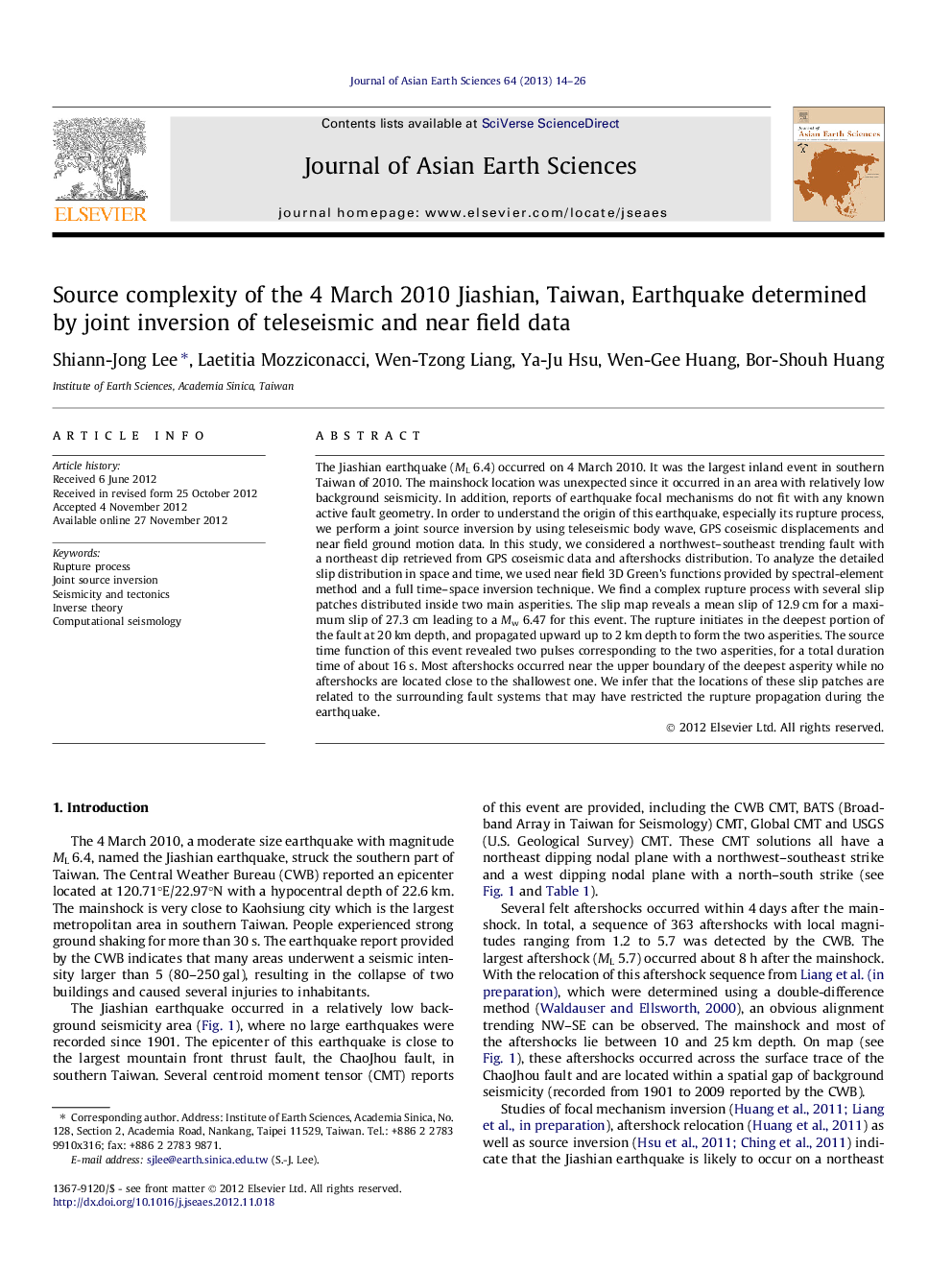| کد مقاله | کد نشریه | سال انتشار | مقاله انگلیسی | نسخه تمام متن |
|---|---|---|---|---|
| 4731230 | 1640401 | 2013 | 13 صفحه PDF | دانلود رایگان |

The Jiashian earthquake (ML 6.4) occurred on 4 March 2010. It was the largest inland event in southern Taiwan of 2010. The mainshock location was unexpected since it occurred in an area with relatively low background seismicity. In addition, reports of earthquake focal mechanisms do not fit with any known active fault geometry. In order to understand the origin of this earthquake, especially its rupture process, we perform a joint source inversion by using teleseismic body wave, GPS coseismic displacements and near field ground motion data. In this study, we considered a northwest–southeast trending fault with a northeast dip retrieved from GPS coseismic data and aftershocks distribution. To analyze the detailed slip distribution in space and time, we used near field 3D Green’s functions provided by spectral-element method and a full time–space inversion technique. We find a complex rupture process with several slip patches distributed inside two main asperities. The slip map reveals a mean slip of 12.9 cm for a maximum slip of 27.3 cm leading to a Mw 6.47 for this event. The rupture initiates in the deepest portion of the fault at 20 km depth, and propagated upward up to 2 km depth to form the two asperities. The source time function of this event revealed two pulses corresponding to the two asperities, for a total duration time of about 16 s. Most aftershocks occurred near the upper boundary of the deepest asperity while no aftershocks are located close to the shallowest one. We infer that the locations of these slip patches are related to the surrounding fault systems that may have restricted the rupture propagation during the earthquake.
► We find a complex rupture process with several slip patches during the Jiashian earthquake.
► Rupture initiates in the deep crust and then propagates upward to the shallow crust.
► The locations of these slip patches are related to the surrounding fault systems.
► This source model can help to understand the tectonic process in southern Taiwan.
Journal: Journal of Asian Earth Sciences - Volume 64, 5 March 2013, Pages 14–26